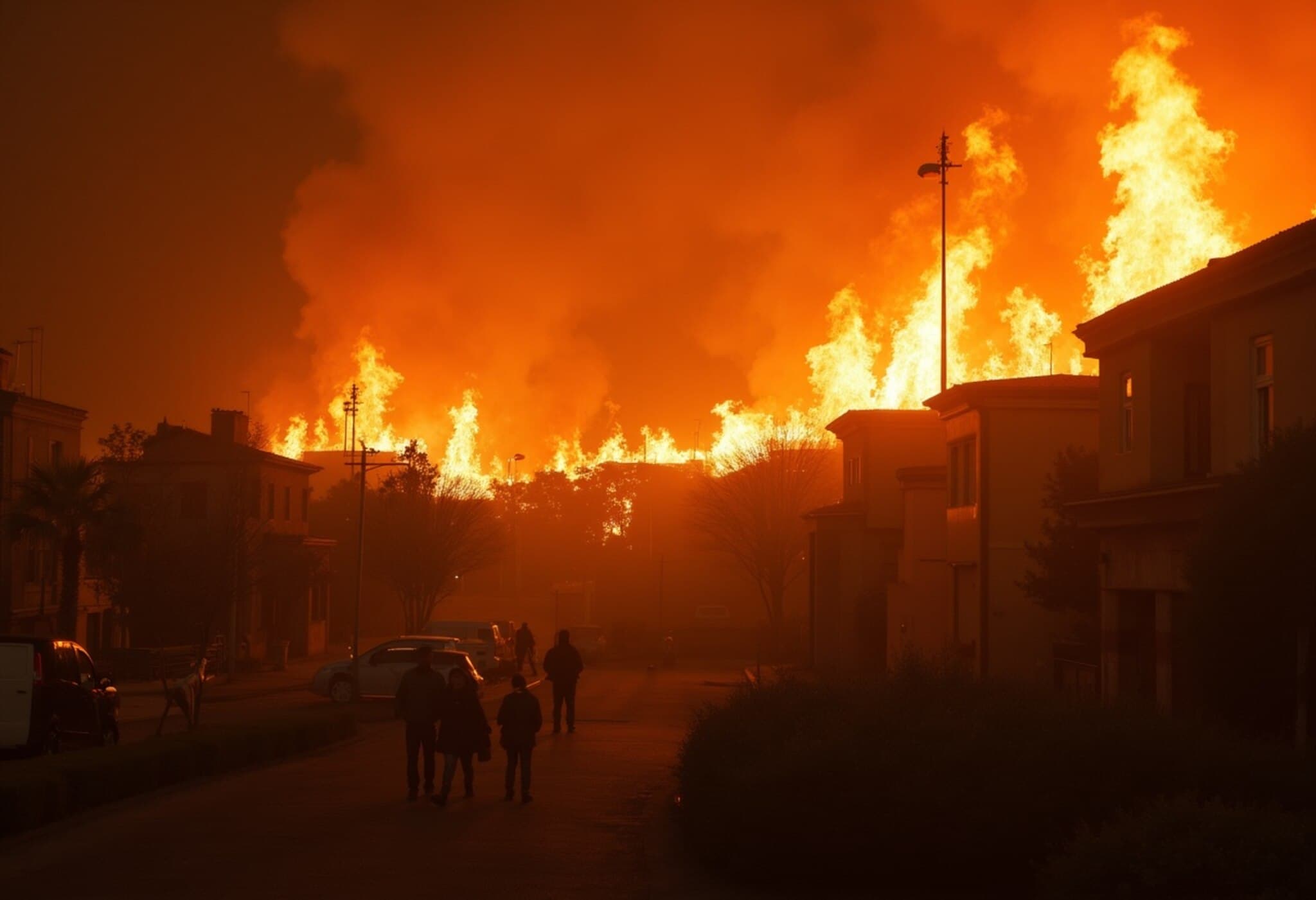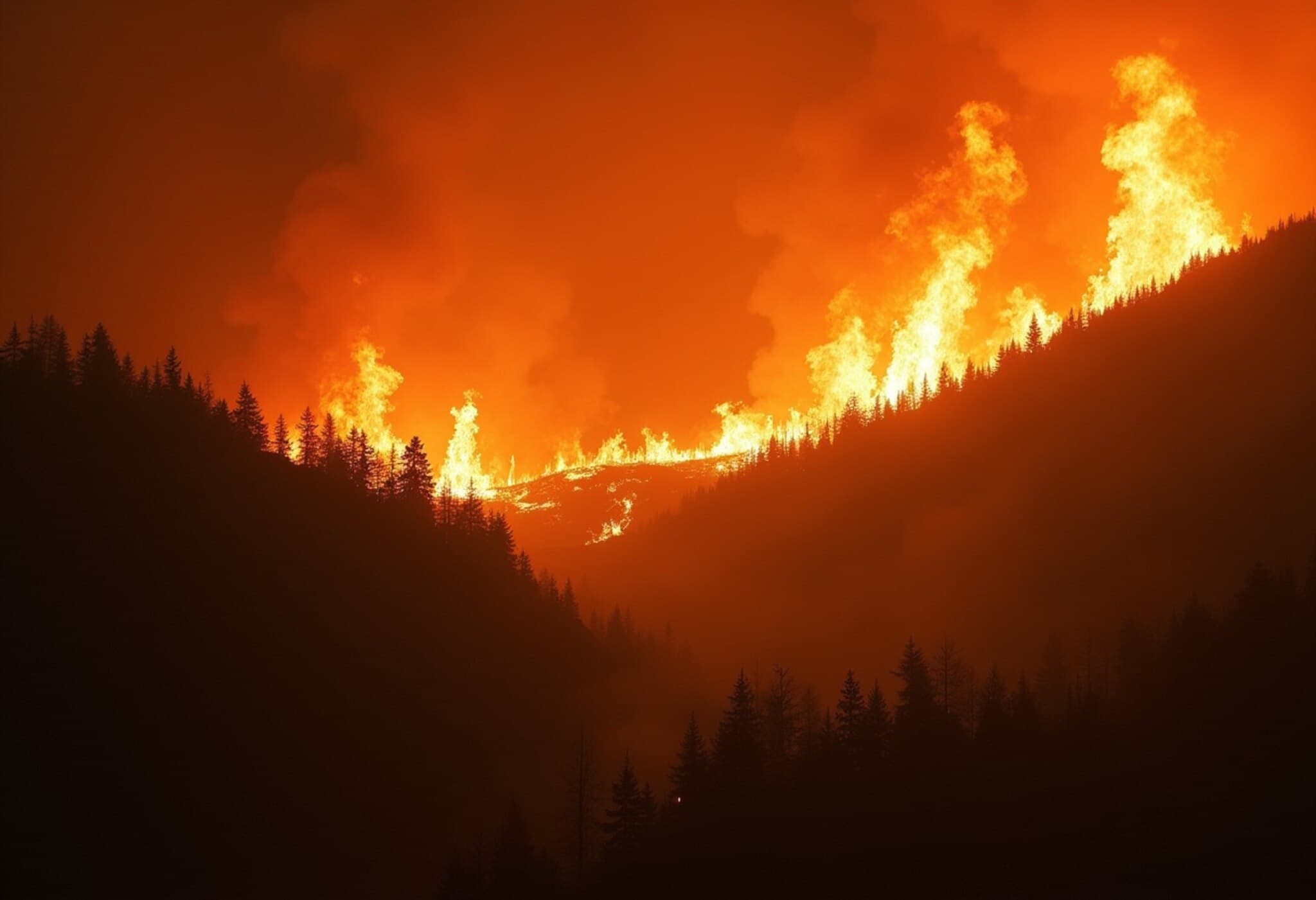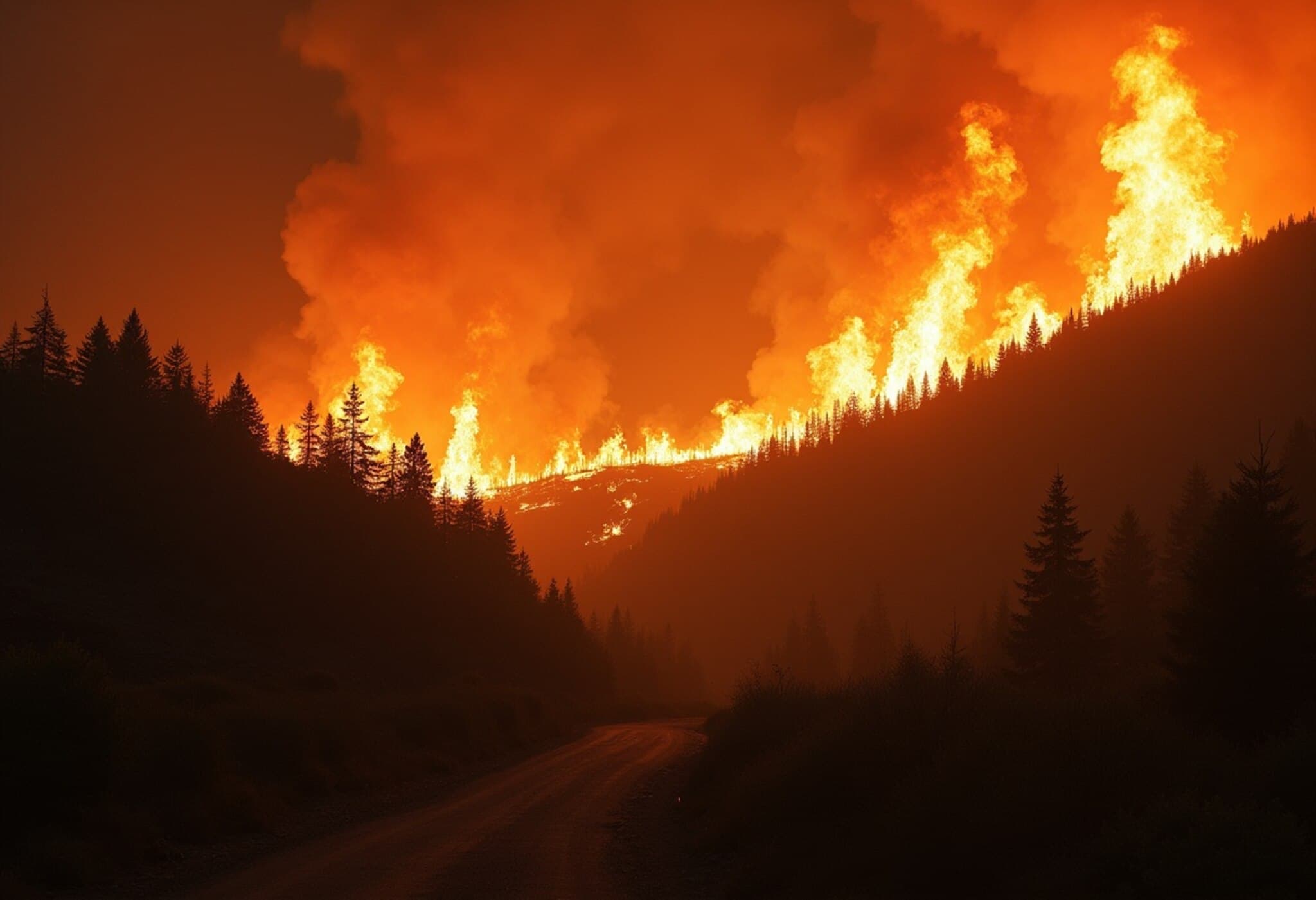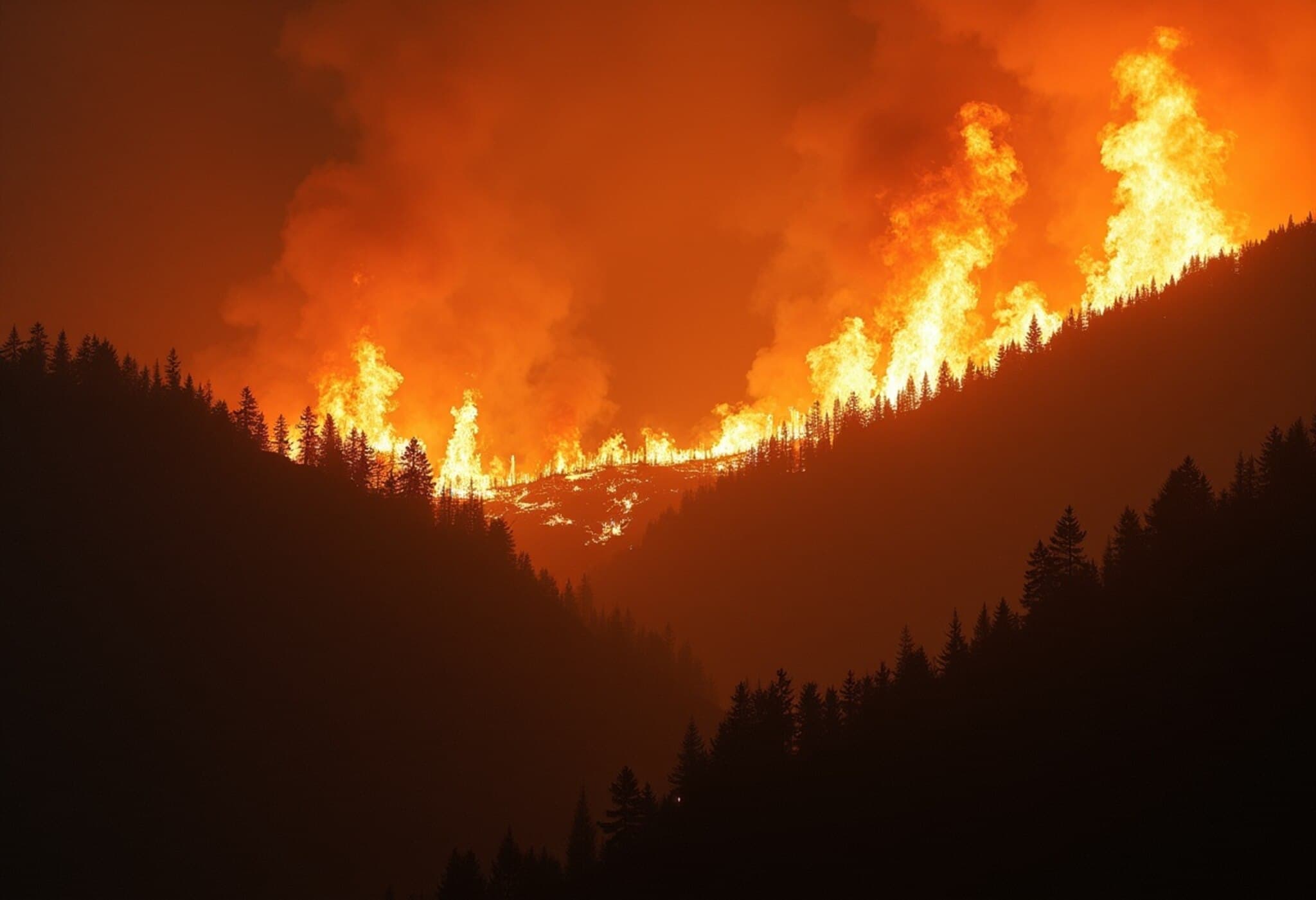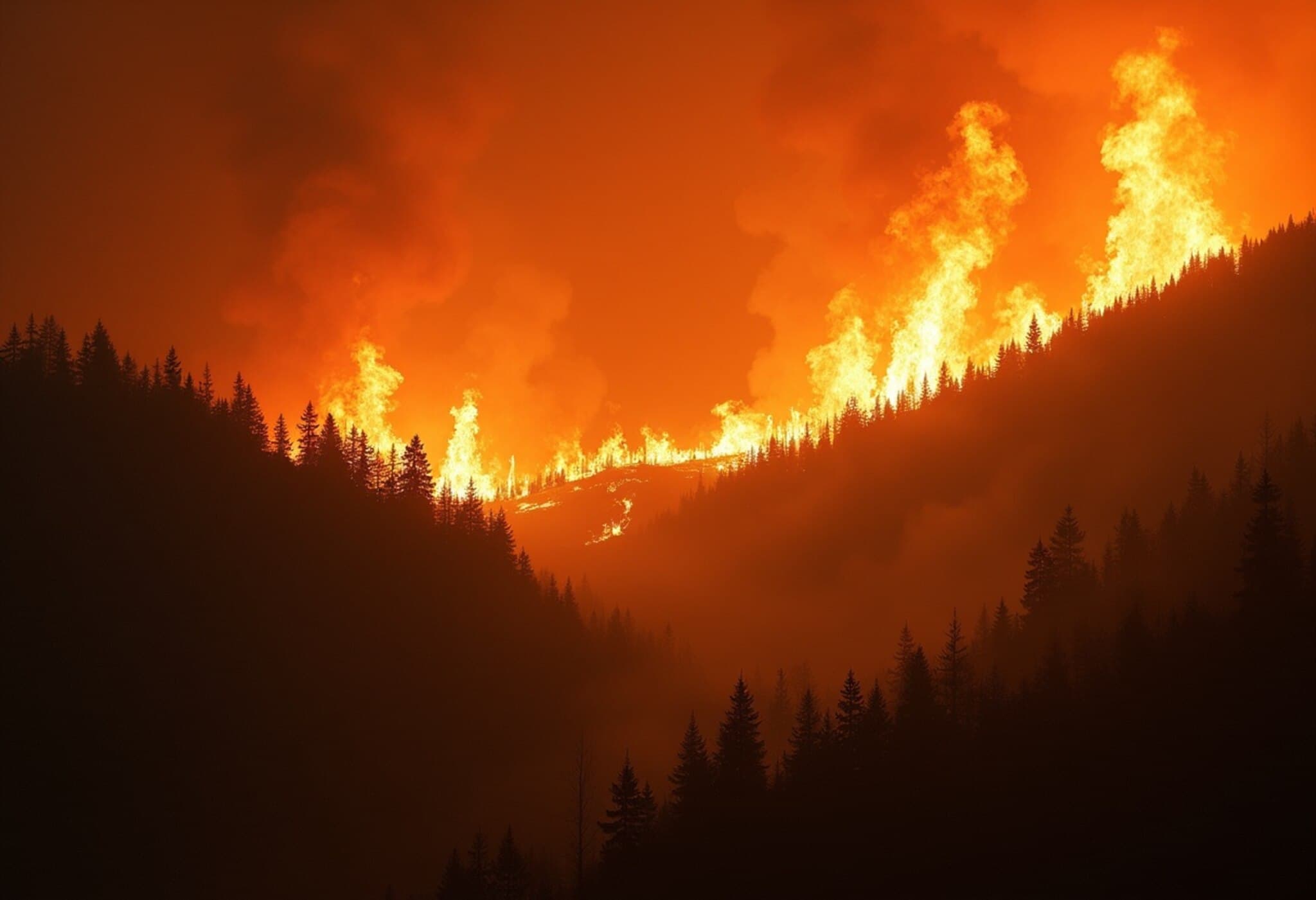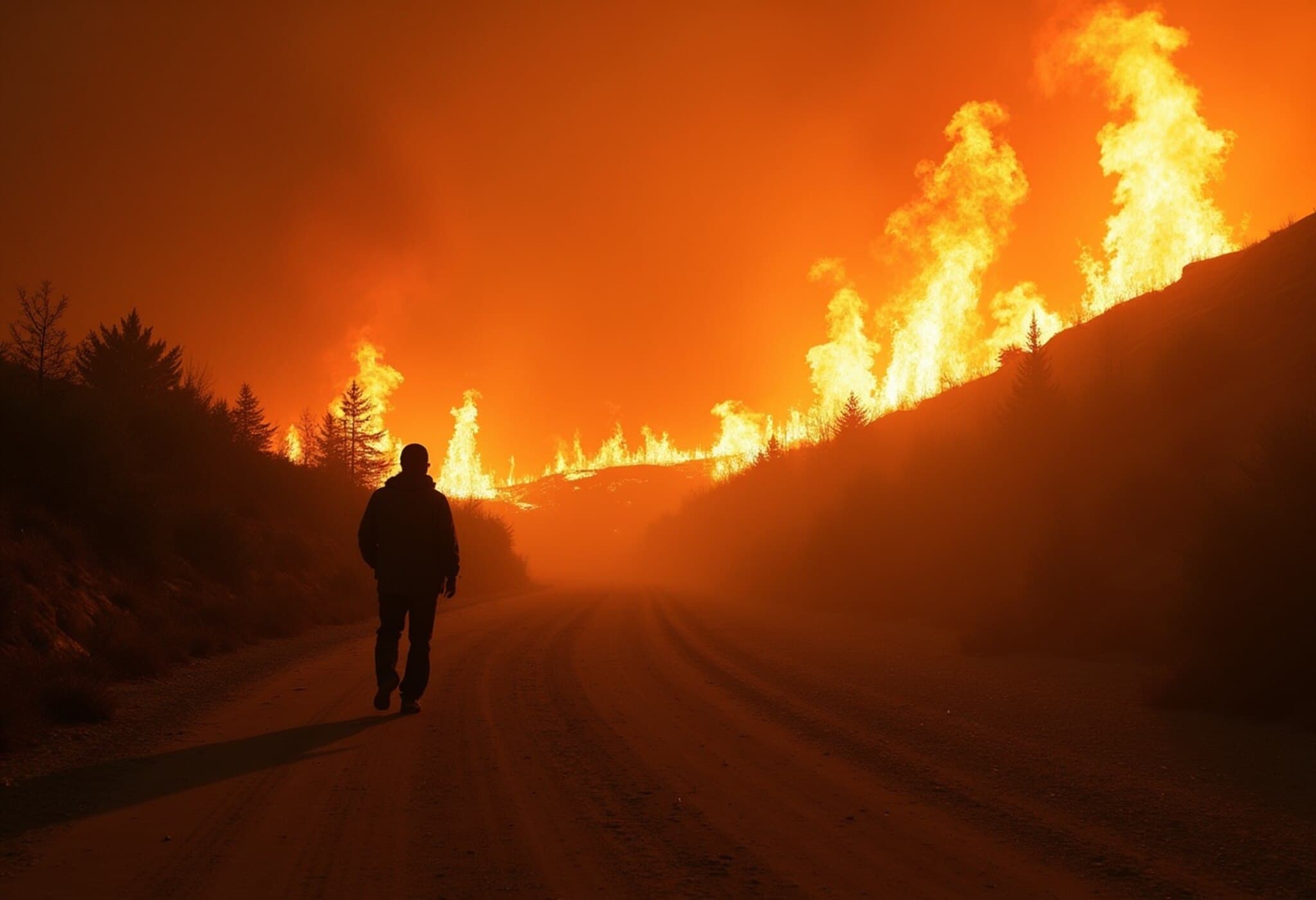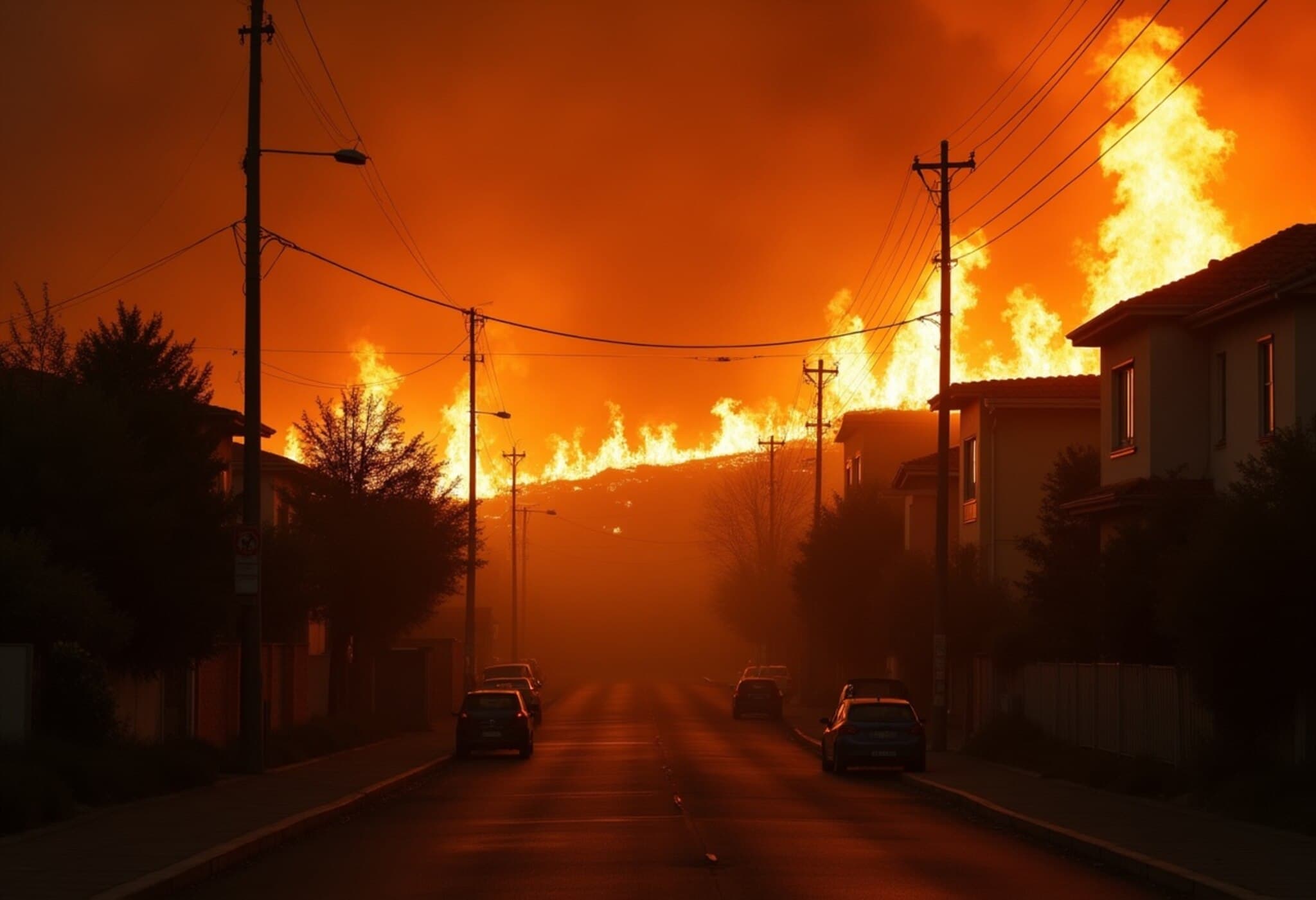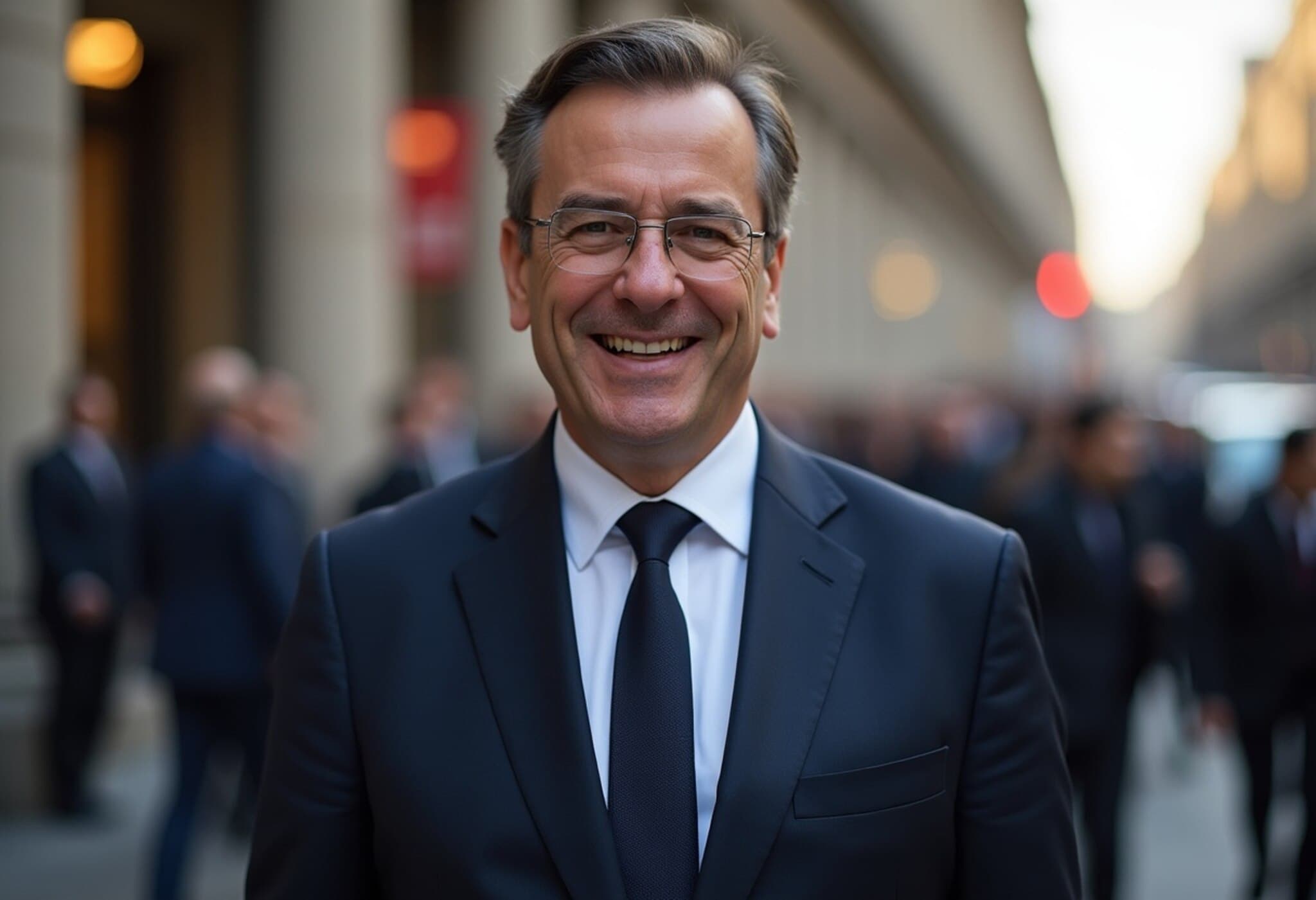Wildfires Surge Toward Marseille, France’s Second-Largest City
In an alarming escalation, fast-moving wildfires have reached the outskirts of Marseille, France’s bustling port city, resulting in over 110 people injured, including first responders, and triggering mass evacuations. As of July 9, 2025, the situation remains critical, with firefighters struggling to contain the blaze amid challenging conditions.
Scale and Impact of the Fire
The intense wildfire, fanned by strong winds and fueled by dense vegetation on steep slopes, advanced at a frightening pace—sometimes moving as fast as 1.2 kilometers (0.7 miles) per minute. Such velocity escalates the risk to lives and property, complicating firefighting efforts.
Local authorities report roughly 110 individuals injured, including nine firefighters and 22 police officers, underscoring the hazardous conditions faced by emergency personnel.
Emergency Response Under Strain
Interior Minister Bruno Retailleau confirmed that around 800 firefighters are deployed and committed to battling the fire through the night. The scale of the blaze demands continuous, coordinated operations to protect residents and critical infrastructure.
Marseille’s mayor, Benoît Payan, vividly described the situation as firefighters engaging in "guerrilla warfare, hoses in hand"—painting a picture of relentless, on-the-ground struggle against relentless flames.
Evacuations and Public Safety Measures
Authorities have evacuated at least 400 residents from endangered neighborhoods and urged others to remain indoors unless evacuation is ordered. This protocol helps keep evacuation routes and emergency access roads clear—a critical factor in effective crisis management.
Additionally, Marseille Provence Airport, a pivotal travel hub closed earlier in the day, plans to partially reopen during the evening. Airport President Julien Coffinier remarked that such a large-scale emergency was unprecedented in his experience.
Official Reactions and Broader Context
French President Emmanuel Macron, currently on an official visit to the UK, expressed solidarity with the affected communities and emergency teams through social media, emphasizing the importance of adherence to safety instructions to facilitate rescue operations.
Minister Retailleau visited Marseille to coordinate with local authorities, signaling the government’s urgent focus on crisis management and resource mobilization.
Expert Insight: Climate Change and Wildfire Risks in Mediterranean Europe
This wildfire outbreak comes amid a broader pattern of increasingly severe fire seasons across Mediterranean Europe — a trend climate scientists attribute to rising temperatures, prolonged droughts, and shifting weather patterns linked to global climate change.
Experts warn that urban areas like Marseille, with expanding outskirts bordering wildfire-prone landscapes, face heightened risks that demand enhanced preparedness and resilient urban planning.
Lessons for the United States and Beyond
- Emergency Coordination: The response highlights the necessity for rapid mobilization and interagency cooperation—lessons valuable for wildfire-prone regions in the U.S., such as California and the Southwest.
- Community Awareness: The call for residents to stay indoors unless evacuated illustrates the delicate balance between public safety and operational efficiency during disasters.
- Infrastructure Resilience: The impact on Marseille’s airport underscores airports’ vulnerability to nearby wildfires — an issue U.S. airports in wildfire zones are increasingly grappling with.
Looking Ahead: Questions for Policymakers and Communities
As wildfires intensify globally, several critical questions emerge:
- How can urban expansion be managed to reduce wildfire risks at city borders?
- What investments in early-warning systems and firefighting technology will be prioritized?
- How will climate policies integrate fire prevention and community resilience efforts?
Editor’s Note
The wildfire crisis unfolding in Marseille serves as a stark reminder of nature’s increasing volatility amid climate change. Beyond the immediate human costs, it urges us to reflect on our preparedness, urban development strategies, and climate resilience. For readers, staying informed and involved in local emergency planning can make a difference. How ready are we—locally and globally—for the worsening challenges ahead?

